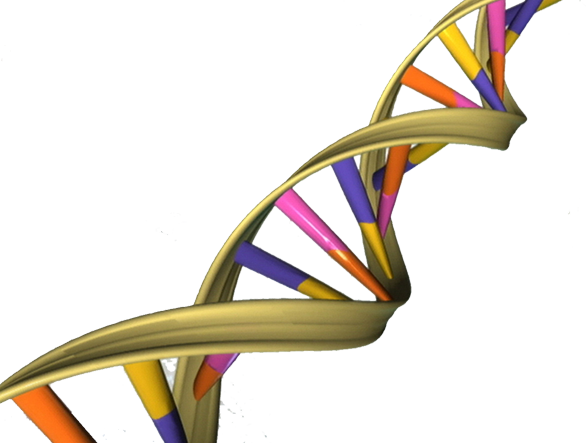 I have been reading a fascinating paper on a couple of proteins called lamin-A and lamin-B. Our cells have their DNA in a particular compartment called the nucleus and the lamin’s basically strengthen the wall of the nucleus, protecting the DNA inside. The work is by Dennis Discher’s group at the University of Pennsylvania.
I have been reading a fascinating paper on a couple of proteins called lamin-A and lamin-B. Our cells have their DNA in a particular compartment called the nucleus and the lamin’s basically strengthen the wall of the nucleus, protecting the DNA inside. The work is by Dennis Discher’s group at the University of Pennsylvania.
Our genes are coded on this DNA and it just a molecule (2 nm in diameter) and so it is delicate, forces of less than a μN (=millionth of the weight of an apple) can break it. Now, the nerve cells in your brain just kind of sit there, transmitting nerve impulses, and so don’t experience much in the way of the forces. But your muscles are very different, there the cells’ job is to generate forces, and if you are running for a bus, say, then the forces in your leg muscles are large.
So, why don’t these forces tear the fragile DNA in your muscle cells apart? Lamin-A is part of the answer. Discher and coworkers showed that the nuclei in muscle cells have much more lamin-A in them than do nerve cells. This is consistent with the nuclei in muscle cells needing more protection than those in nerve cells.
One thing surprised me, although it was probably just me being dumb. Very crudely speaking lamin-A makes the nucleus wall more viscous, while lamin-B makes it more elastic. Basically, lamin-A by being viscous resists motion, the resistive force it generates doubles if the nucleus is deformed at twice the rate. But lamin-B by being elastic is like a spring, if the nucleus is stretched by twice the amount, the resistive force lamin-B generates doubles.
My wrong-headed idea was that in muscles the nucleus would need to be stiffer in the sense of basically having being like a stiffer spring. And it would if it had lots of lamin-B, but it doesn’t, it has lots of lamin-A. The nuclei in your muscles are very viscous (in comparison to those in your brain) but perhaps not much stiffer.
The fact that the lamin the nuclei in your muscles is the viscous one makes me wonder if the most dangerous forces to your DNA are the fast acting ones – viscous stuff like lamin-A resist fast but not slow forces. Maybe Usain Bolt needs all the the lamin-A he can get to protect the DNA in his muscles.
